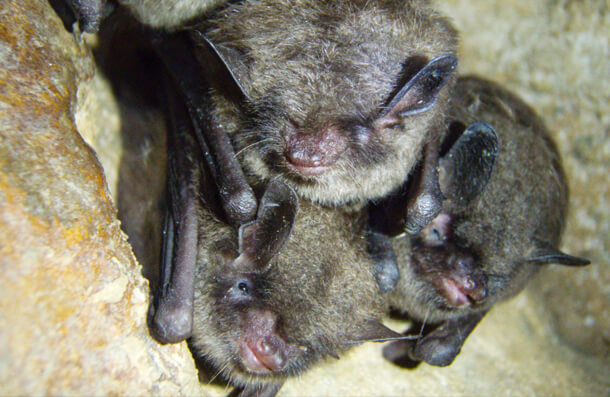Statement on Maryland's Criterion Wind Project Decision:
(Washington, D.C., February 4, 2014) Following is a statement from American Bird Conservancy on the issuance of a Take Permit from the U.S. Fish and Wildlife Service (USFWS) to the Criterion Wind Project in Garrett County, Md. This permit is for the likely killing of an endangered species, the Indiana bat, by the project. (See press release from USFWS.) The issuance of the permit requires the development of a habitat conservation plan for the species. The permit was requested in 2012.
 “We applaud the fact that the developer is collaborating with USFWS and following a voluntary process to mitigate wildlife impacts from their wind project,” said Dr. Michael Hutchins, National Coordinator of ABC's Bird Smart Wind Energy Campaign. “There clearly is a lot of work to do in that regard, because this project by Criterion Power Partners, LLC, in Garrett County, Md., is notorious for its impact on wildlife, including endangered species. While it is our position that it should never have been allowed to locate there in the first place, good faith efforts to move forward and minimize wildlife mortality at this existing facility are certainly welcome.”
“We applaud the fact that the developer is collaborating with USFWS and following a voluntary process to mitigate wildlife impacts from their wind project,” said Dr. Michael Hutchins, National Coordinator of ABC's Bird Smart Wind Energy Campaign. “There clearly is a lot of work to do in that regard, because this project by Criterion Power Partners, LLC, in Garrett County, Md., is notorious for its impact on wildlife, including endangered species. While it is our position that it should never have been allowed to locate there in the first place, good faith efforts to move forward and minimize wildlife mortality at this existing facility are certainly welcome.”
“However, it is hardly a conservation victory for wildlife, as the federal press release positions it,” continued Hutchins. “Federal officials have already reported that this wind project has the highest per-turbine bird mortality ever estimated at a studied wind project in the United States and the highest per-turbine bird mortality ever documented in North America. It is regrettable that this project was allowed to be built in this sensitive area in the first place. This is what you get when you have siting guidelines that are voluntary as opposed to mandatory. We will be looking very closely at the Habitat Conservation Plan and Avian Protection Plan once they become available.”
“It is hard to see the wind energy industry as ‘green' when it is unnecessarily killing large numbers of protected birds, bats, and other wildlife—especially when such problems can be avoided early on through proper siting,” Hutchins added.


















































